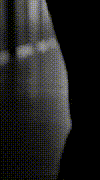Some thoughts here...
Between Gimp and Inkscape, it depends indeed on what kind of art you wanna do. If you want to do clean, cel-shaded kind of art, go for Inkscape. If you want to do more painterly stuff, you'll want to try Gimp (or the alternative, Paint.NET -which is more photoshop-like). Gimp not as capable as Photoshop? Granted, it has it's shortcomings; it's layout is different and -I admit- the multi window approach is not very handy, but once over the initial learning curve, it is a pretty decent program. After all those who use Photoshop (including me) didn't learn it in one day, right? I did some speedpainting tests in Gimp and was pretty pleased with the results. Has some superior filters too (notably "Gimpressionist"). And it's entirely FREE, doesn't cost a thing to give it a try, eh? 😉
Should you want to go for an Adobe product, you might want to try Photoshop Elements. It's pretty affordable and has every basic function one needs for digital painting. In fact I've been using it for a looooong time before purchasing Photoshop CS3 past summer.
On tablets; I use a Bamboo One on my main computer: pretty simple, but still a great tablet and it comes at a very affordable price. On my laptop I use a standard (widescreen) Bamboo tablet.
My dream is to own a Wacom Cintiq tablet (which doubles as a screen -so you're working directly on your artwork itself) although that is a bit out of my budget range right now... 😀
As for the Multiply-setting of the lineart layer when coloring in Photoshop, that's indeed a the technique I use, but it's certainly not the only one. For instance I know White Lotus (Bandito's amazing colorist) uses a very different technique, which allows for partly colored outlined. It all depends on the resut you want to get. But for most purposes, I will admit the multiply-method is the easiest.






